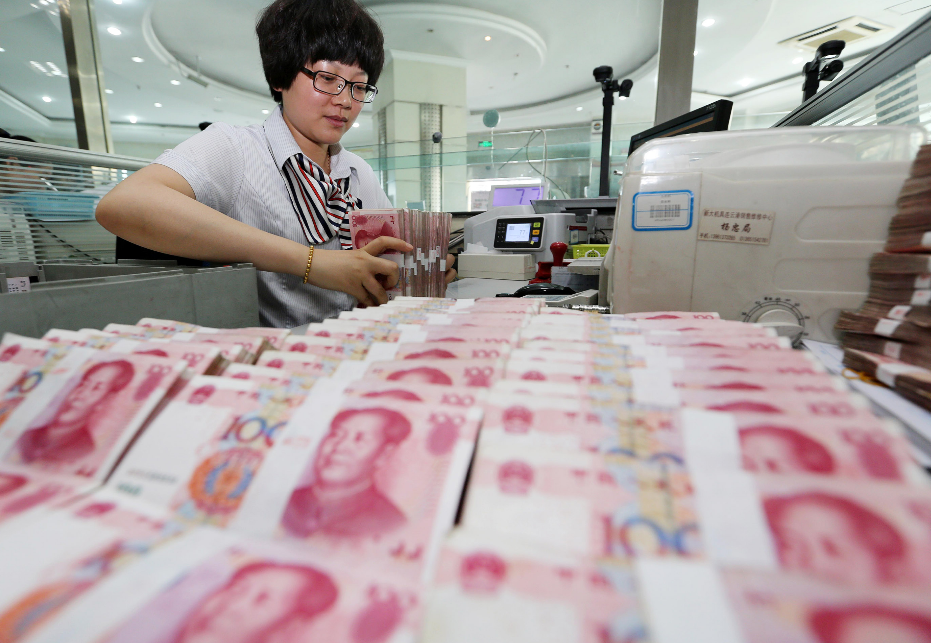
Photo shows a worker counts Chinese currency Renminbi (RMB) at a bank in Lianyungang, east China's Jiangsu Province, Aug. 11, 2015.
BEIJING, Aug. 27 (Xinhua) -- The Chinese currency renminbi (RMB), or the yuan will remain the long term attraction to the global market, and RMB assets will show the ability of proliferation, according to experts.
A report recently released by the People's Bank of China (PBOC) shows that the cross-border use of RMB has remained robust and growing since 2020, due to factors such as the complex and changeable economic and financial situations at home and abroad, and increasing uncertainties overseas.
The PBOC data shows that the amount of payments made and received in yuan between China and the Belt and Road countries was more than 2.73 trillion yuan (about 396.39 billion U.S. dollars) in 2019, accounting for 13.9 percent of the total cross-border payments made and received in yuan in the same period. In breakdown, 732.5 billion yuan were handled for goods trade, 252.4 billion yuan for direct investment and 213.5 billion yuan for cross-border financing.
Experts note that the above figures reflect the growing popularity gained by the RMB in the Belt and Road countries and more and more enterprises prefer to the cross-border settlement through the currency.
Although the central banks' benchmark interest rates worldwide have generally maintained at a minimum interval and some countries have already implemented negative interest rates, given that China's benchmark interest rate is still 1.75 percent, experts believe that the RMB will remain the long term attraction to the global market, and RMB assets will show the ability of proliferation.
Zhou Chengjun, director of the Financial Research Institute of the PBOC, said that it is necessary to establish a global RMB foreign exchange trading market and corresponding infrastructure, allowing investors to carry out hedging and foreign exchange transactions in the local foreign exchange market in accordance with local laws and regulations after holding RMB assets.
Zhou suggested that the country promote development of onshore and offshore RMB financial business and steadily facilitate the opening of capital accounts and the convertibility of RMB.
According to a report released by the PBOC in early August, more than 70 central banks and monetary authorities worldwide have included RMB into their foreign exchange reserves.
Ding Meng, an economist with the Financial Research Institute of Bank of China (Hong Kong) Limited said that the acceptance of RMB as a payment, investment and reserve currency has been increasing internationally, allowing the wide use of the currency in trade and economic exchanges in the Belt and Road countries.
Ding expects that with the growth of trade and economic exchanges between China and the Belt and Road countries, it will become an option for more enterprises to use the currency for cross-border settlement so as to reduce exchange rate risk and promote trade settlement. (Contributed by Han Jie, edited by Hu Pingchao with Xinhua Silk Road, hupingchao@xinhua.org)




 A single purchase
A single purchase









